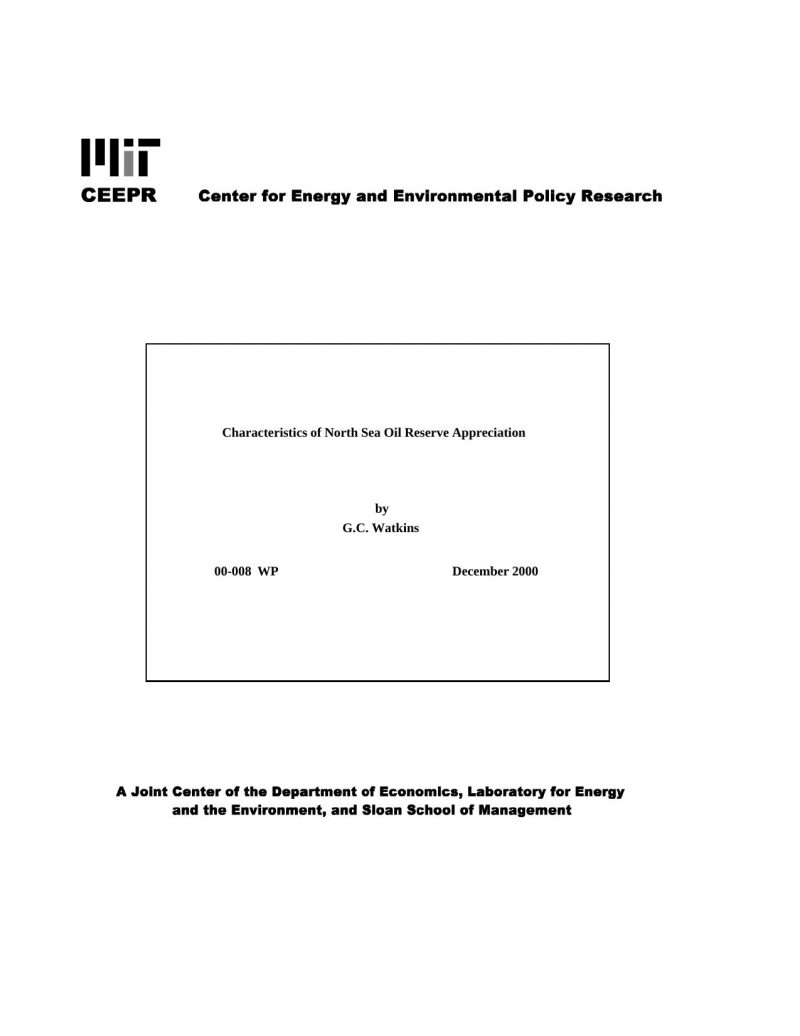Characteristics of North Sea Oil Reserve Appreciation
G.C. Watkins
Dec-00
In many petroleum basins, and especially in more mature areas, most reserve additions consist of the growth over time of prior discoveries, a phenomenon termed reserve appreciation. This paper concerns crude oil reserve appreciation in both the UK and Norwegian sectors of the North Sea. It examines the change in reserves attributed to North Sea fields over time, seeking to reveal patterns of reserve appreciation both for individual fields and for groups of fields classified by potentially relevant common elements. These include field size, year of production start-up, geological age, gravity, depth and depletion rate. The paper emphasises the statistical analysis of reserve appreciation. It contrasts the Norwegian and UK experience. An important distinction is drawn between appreciation of oil-in-place and changes in recovery factors. North Sea oil reserve appreciation between production start-up and the last observation year (usually 1996) is found to be substantial, but it generally lacks a consistent profile. Appreciation recorded for the Norwegian fields on average is considerably greater than for the UK. Most UK appreciation is seemingly accounted for by oil-in-place; in Norway, from increases in recovery factors. However, UK recovery factors commence at much higher levels than those for Norway.



